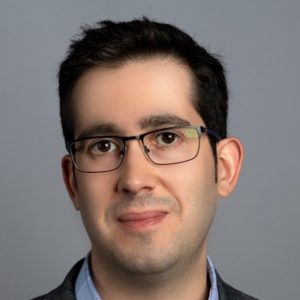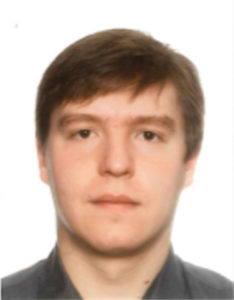T5 Title: Terahertz Communications: Myths, Challenges and Opportunities
Organizer: Josep M. Jornet
Organizer: Vitaly Petrov
Abstract: Terahertz (THz)-band (0.1-10 THz) communication is envisioned as a key wireless technology of the next decade. The THz band will help overcome the spectrum scarcity problems and capacity limitations of current wireless networks, by providing an unprecedentedly large bandwidth which can enable applications including Terabit-per-second backhaul systems, ultra-high-definition content streaming among mobile devices, and wireless high-bandwidth secure communications. In addition, the very small wavelength at THz frequencies enables the development of miniature radios, which can be utilized for new networking paradigms such as wireless massive-core computing architectures, wireless nanosensor networks for biomedical applications, and the Internet of Nano-Things.
In this tutorial, the specifics of THz device technology and THz wireless channel are first revealed, debunking some long-established myths through state-of-the-art experimental results. Then, the key aspects of designing the physical layer solutions for THz communication systems are explained. Later, the existing approaches are introduced to build reliable and efficient link-layer solutions for ultra-directional ultra-broadband THz systems. Finally, the recent standardization and regulatory advantages, including THz passive and active service coexistence, are discussed, highlighting the possible opportunities to integrate THz communication systems into a landscape of upcoming beyond-5G and 6G technologies. The tutorial ends up with a discussion of the open problems and research directions in this rising field.
 Bio: Josep M. Jornet is an Associate Professor in the Department of Electrical and Computer Engineering, the Director of the Ultrabroadband Nanonetworking Laboratory and a member of the Institute for the Wireless Internet of Things at Northeastern University, in Boston, MA. He received the B.S. in Telecommunication Engineering and the M.Sc. in Information and Communication Technologies from the Universitat Politecnica de Catalunya, Barcelona, Spain, in 2008. He received the Ph.D. degree in Electrical and Computer Engineering from the Georgia Institute of Technology, Atlanta, GA, in 2013. From August 2013 and August 2019, he was an Assistant Professor with the Department of Electrical Engineering at the University at Buffalo, The State University of New York. His current research interests are in Terahertz-band communication networks, Wireless Nano-bio communication Networks and the Internet of Nano-Things. In these areas, he has co-authored more than 180 peer-reviewed scientific publications, 1 book, and has also been granted 3 US patents, which accumulate over 8,500 citations (h-index of 42) as of October 2020. He is serving as the lead PI on multiple grants from U.S. federal agencies including the National Science Foundation, the Air Force Office of Scientific Research and the Air Force Research Laboratory. He is a recipient of the National Science Foundation CAREER award and of several other awards from IEEE, ACM and UB.
Bio: Josep M. Jornet is an Associate Professor in the Department of Electrical and Computer Engineering, the Director of the Ultrabroadband Nanonetworking Laboratory and a member of the Institute for the Wireless Internet of Things at Northeastern University, in Boston, MA. He received the B.S. in Telecommunication Engineering and the M.Sc. in Information and Communication Technologies from the Universitat Politecnica de Catalunya, Barcelona, Spain, in 2008. He received the Ph.D. degree in Electrical and Computer Engineering from the Georgia Institute of Technology, Atlanta, GA, in 2013. From August 2013 and August 2019, he was an Assistant Professor with the Department of Electrical Engineering at the University at Buffalo, The State University of New York. His current research interests are in Terahertz-band communication networks, Wireless Nano-bio communication Networks and the Internet of Nano-Things. In these areas, he has co-authored more than 180 peer-reviewed scientific publications, 1 book, and has also been granted 3 US patents, which accumulate over 8,500 citations (h-index of 42) as of October 2020. He is serving as the lead PI on multiple grants from U.S. federal agencies including the National Science Foundation, the Air Force Office of Scientific Research and the Air Force Research Laboratory. He is a recipient of the National Science Foundation CAREER award and of several other awards from IEEE, ACM and UB.
 Bio: Vitaly Petrov is a Senior Standardization Specialist and 3GPP RAN1 delegate with Nokia Bell Labs, Helsinki, Finland. He received the Specialist degree (2011) from SUAI University, St. Petersburg, Russia, the M.Sc. degree (2014) from Tampere University of Technology, Finland, and the Dr. Sc. (PhD) degree (2020) from Tampere University, Finland. His research interests are in beyond-5G wireless systems, millimeter wave and terahertz band communication networks. He co-authored more than 40 peer-reviewed scientific publications and several book chapters in this fields that received over 1,500 citations (h-index of 22). Vitaly is the recipient of the Best Student Paper Award at IEEE VTC-Fall’15, Best Student Poster Award at IEEE WCNC’17, and Best Student Journal Paper Award from IEEE Finland, 2018.
Bio: Vitaly Petrov is a Senior Standardization Specialist and 3GPP RAN1 delegate with Nokia Bell Labs, Helsinki, Finland. He received the Specialist degree (2011) from SUAI University, St. Petersburg, Russia, the M.Sc. degree (2014) from Tampere University of Technology, Finland, and the Dr. Sc. (PhD) degree (2020) from Tampere University, Finland. His research interests are in beyond-5G wireless systems, millimeter wave and terahertz band communication networks. He co-authored more than 40 peer-reviewed scientific publications and several book chapters in this fields that received over 1,500 citations (h-index of 22). Vitaly is the recipient of the Best Student Paper Award at IEEE VTC-Fall’15, Best Student Poster Award at IEEE WCNC’17, and Best Student Journal Paper Award from IEEE Finland, 2018.
